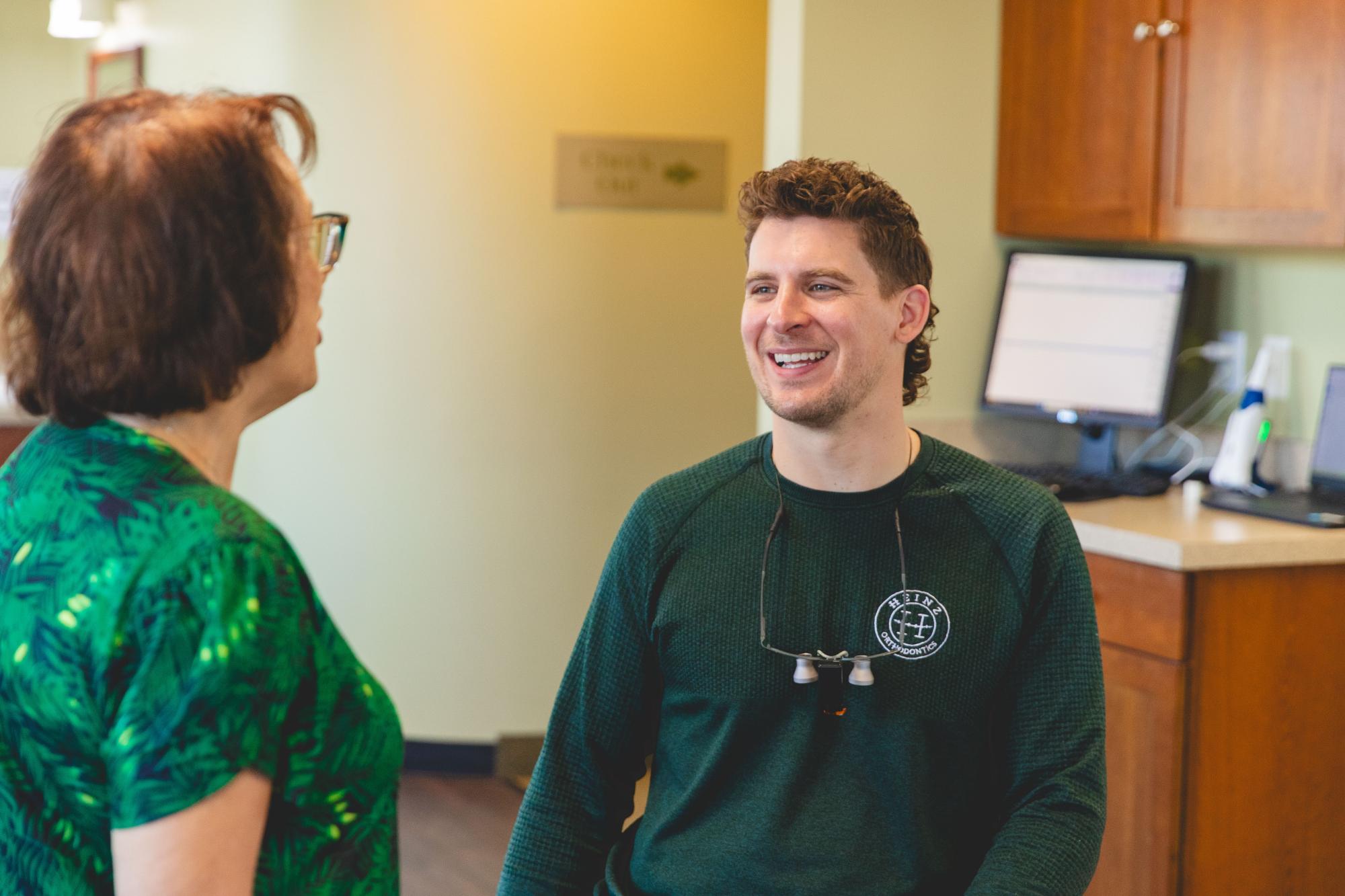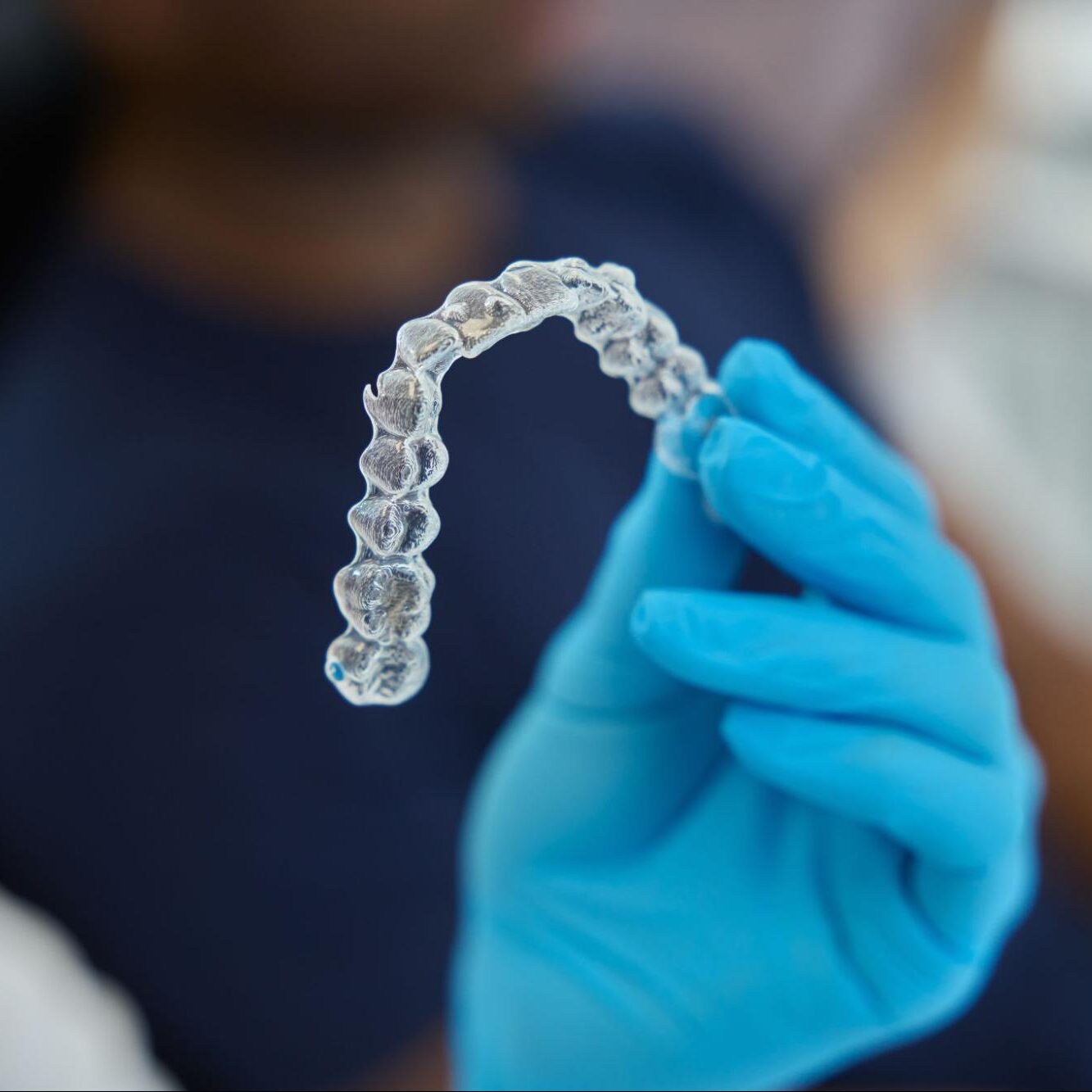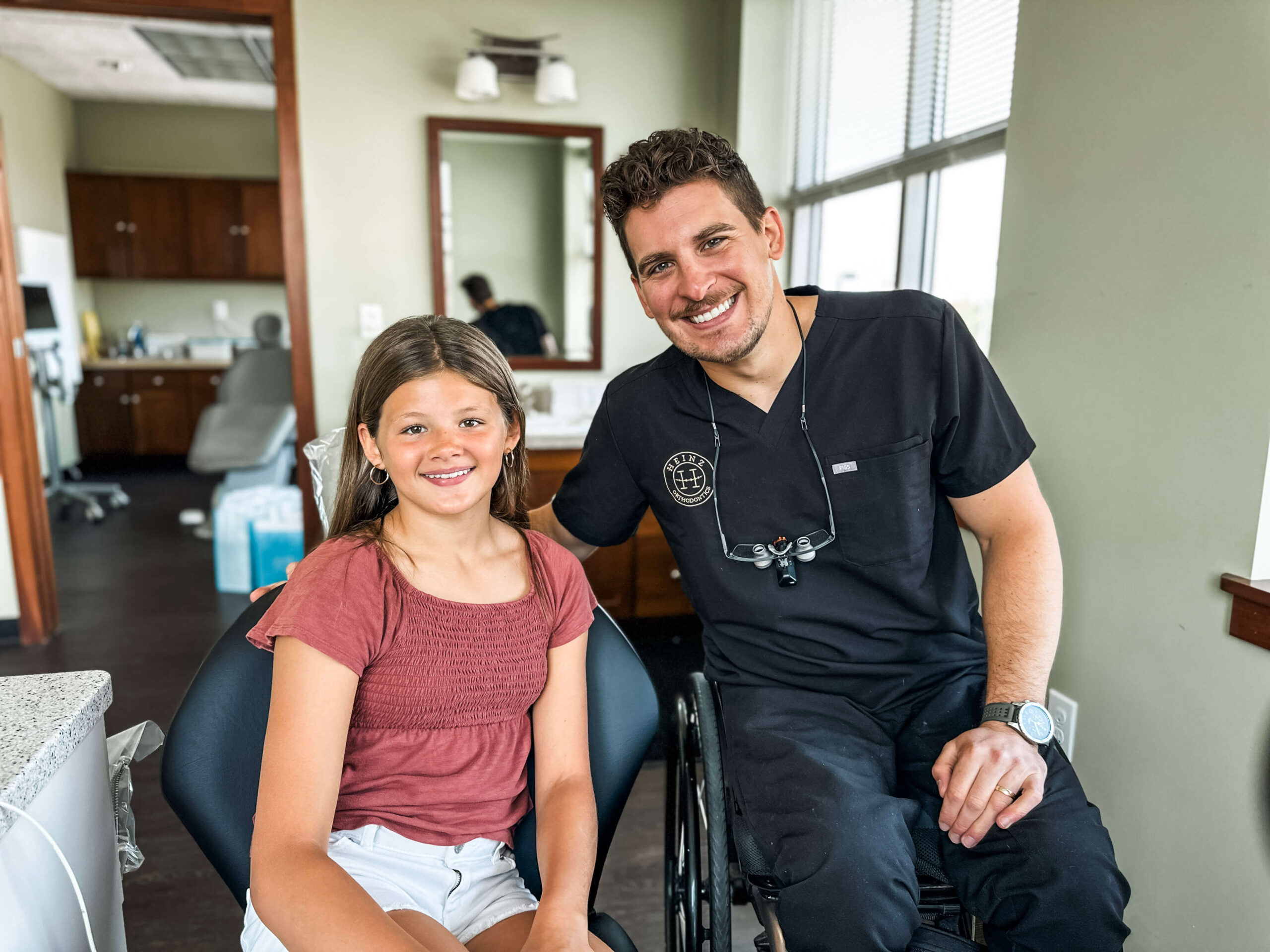Rockford & Grand Rapids Clear Aligners
Clear Your Way to a
Straighter Smile
Innovative clear aligners at Heinz Orthodontics help you get the straighter, healthier smile you deserve without the use of traditional metal brackets and wires.
Dr. Heinz will meticulously design a unique treatment plan for you and your family using advanced technology to create a series of custom aligners that gradually shift your teeth into their desired positions.
Your Clear Path to a Straighter Smile

01
Meet With Dr. Heinz
The first step to getting your dream smile is to meet with Dr. Heinz for your free consultation.
At this appointment, Dr. Heinz and his team will take photographs, digital images, and X-ray scans of your teeth. Once this information is gathered, our team will use it to create your customized treatment plan!

02
Customize Your Treatment Plan
After we create the perfect, unique treatment plan for you, Dr. Heinz and our team will explain your treatment options to you and answer any questions you might have about the process.
Dr. Heinz will then pull up a digital 3D rendering of your current smile and will give you a sneak peek at your post-treatment smile!

03
Wear Your Aligners as Prescribed
To keep your treatment on track, you need to make sure you’re wearing your aligners for a minimum of 22 hours a day.
Feel free to take your trays out for your morning coffee, at meal times, and for social events. Just remember to promptly replace your aligners after brushing and flossing. Wearing your aligners as prescribed will have you on your way to a new smile in no time!

04
Enjoy Life With a New Smile
Now that your treatment journey has come to a close, you get to enjoy your new smile forever! Embrace life with confidence and joy, and take every opportunity to show off your new smile.
Remember to wear your retainers every night and continue regular check-ups with your dentist to preserve your smile and oral health.

Clear Options for
Your Smile Journey
Are you ready to have the smile of your dreams but feel like traditional braces aren’t the right option for you?
At Heinz Orthodontics, we’re proud to offer clear aligners as a discreet and effective treatment for adults. These aligners are virtually invisible, allowing you to maintain a low profile while boosting your self-confidence throughout treatment.
Invisalign
Invisalign for adults has become one of the most popular types of orthodontic treatment for a variety of reasons. Invisalign for adults adapts to your lifestyle, so you don’t have to change anything about your day to day life.
With no food restrictions and no pokey wires and brackets, Invisalign clear aligners comfortably and efficiently move your teeth into their preferred position.
You don’t have to worry about having food in your teeth during your important presentation — or having to rush to our office if a wire pops out of place! Your Invisalign clear aligners will effortlessly take you from your morning workout, to work, and off to happy hour without anyone even noticing you have them in!


Invisalign Teen
At Heinz Orthodontics, we offer an alternative to traditional braces that we think your teen will love!
Invisalign clear aligners are a virtually invisible, removable alternative to conventional braces. This clear aligner system allows your teen to confidently improve their smiles without traditional braces changing their appearance or inconveniencing their daily lives.
That’s because Invisalign clear aligners fit your teen’s lifestyle — not the other way around.
How? Invisalign trays are removable, which means your teen can take them out for social events, enjoy their favorite foods, and maintain their oral hygiene.
So whether they’re giving a big presentation at school, posing for the camera during homecoming, playing their favorite sport, participating in extracurriculars, or just wanting to continue eating their favorite foods — with Invisalign, your teen can continue living their everyday life without interruption.
Invisalign aligners also require fewer visits to the office, meaning less disruption to school, practice, or other activities.
Your teen will need to wear their clear aligners for 20 — 22 hours a day to see the best, fastest results. We also recommend your teen brush their teeth each time they eat before putting their clear aligners back in! Aside from that, your teen will be able to live their regular everyday life!

Angel Aligners
Angel Aligner is an innovative technology with discreet and comfortable wear to improve your smile without the use of traditional metal braces and wires.
The treatment consists of a series of clear, molded aligners that are custom fit to your teeth.
Your nearly invisible aligners will straighten your teeth over time based on a treatment plan designed by Dr. Heinz to ultimately create your ideal smile.
The Angel Aligner Advantage
Clear aligner technology has revolutionized teeth straightening, allowing individuals like you to get their best smile without using traditional braces.
Angel Aligner prioritizes your needs by not only aligning your teeth but also offering some unique benefits:
Proven Results
With a 20-year legacy, Angel Aligner has earned the trust of orthodontists and patients like you. The transformation of one million smiles globally is a tribute to their success and credibility.
AngelButtons
The world’s first and only integrated button for elastic wearing, which can reduce emergency appointments meaning less disruption to your daily life.
Prioritized Patient Comfort
Crafted with meticulous precision, each aligner is tailored to your unique dental structure and trimmed and polished for patient comfort.
Predictable Results
The treatment process is carefully planned using digital software that provides you with a clear picture of what to expect in terms of results and treatment duration.
